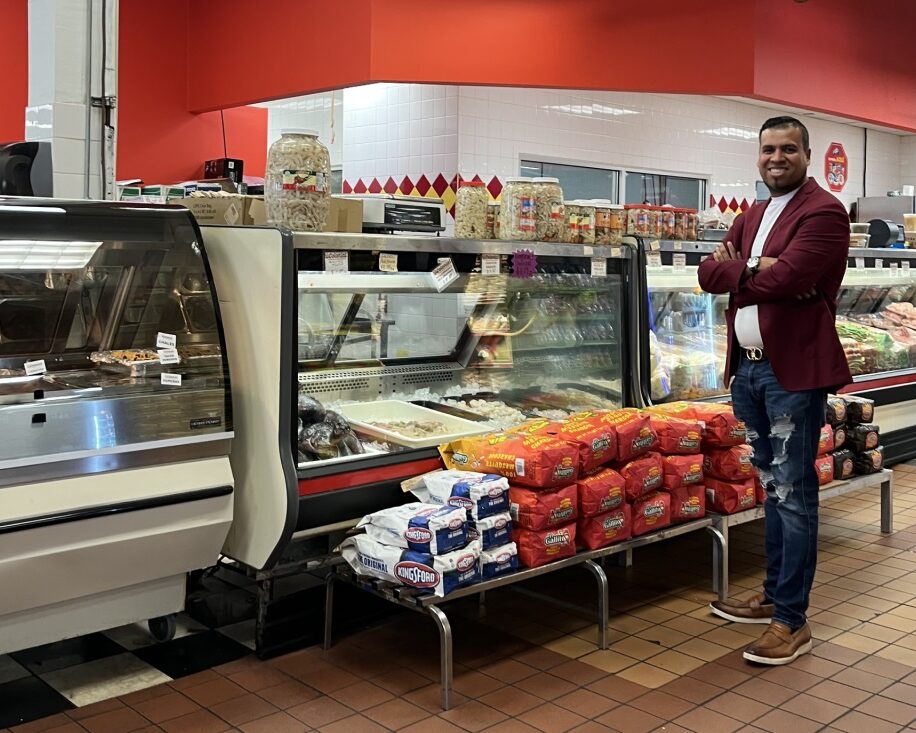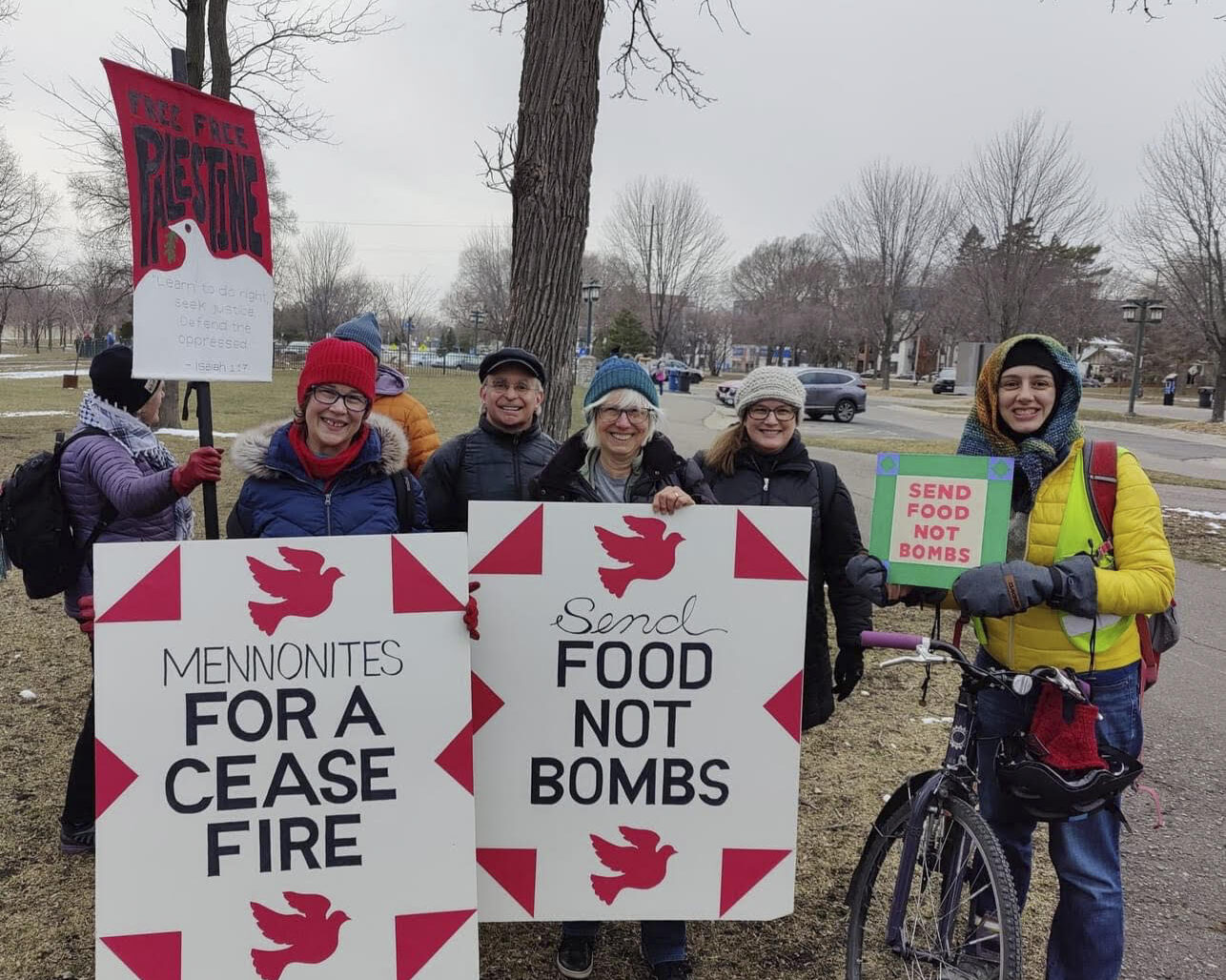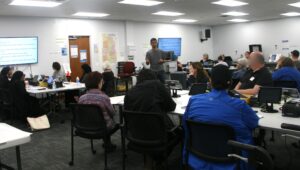
Election judge training (Photo/Stephanie Fox)
BY STEPHANIE FOX
The 2024 election season is over except for the shouting (lots and lots of shouting). But, although Minnesota and the City of Minneapolis has one of the highest voter turnouts in the country with highly engaged voters, many people don’t know what goes on behind the scenes.
Since 1968, the city has had between 68 to 83 percent of registered voters showing up at the polls during presidential elections, with a high turnout for midterm and municipal elections as well. “The City of Minneapolis and the state as a whole takes pride in their voter turn out,” said Jon Martin, Department Director of Voter Services for Minneapolis. “Minnesota has always had a civic-minded and civically engaged population, and that is part of the reason is that so many people come to the polls. But the elections officers throughout the state and the city work hard to make sure voting is as fair and honest as possible.”
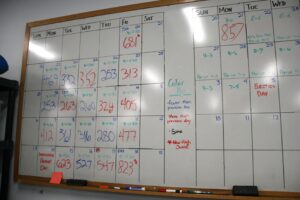
Early voting count at election headquarters (Photo/Stephanie Fox)
The job of election officials, he said, is not just to make the voting honest but also to open the process to any eligible voter, citizens who have reached the age of 18 and are not currently incarcerated.
There are many ways to vote in Minnesota. There are the people who prefer to show up at their polling place on Election Day, an important tradition for many. Other voters like to vote early, but still vote in person. This year, two voting centers were open for early voting during the entire 46-day pre-election day voting period and well as an additional 11 pop-up locations.
The city employs about 2,600 employees to work at the polls on Election Day, with another 100 or so staffing early voting locations.
Martin says that poll workers and election officials have to combat a lot of misinformation. Much of what workers do helps reinforce trust. “We have to show that the elections are accurate and fair. We have to show that the votes are counted correctly, and the results are accurate and timely.”
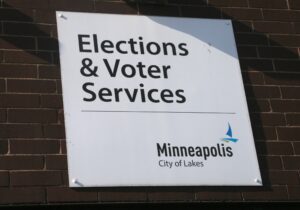 At any poll place, if a completed ballot is handled by anyone except the voter, the staff must include workers from both parties so that no one can make an accusation of tampering with ballots or changing the results.
At any poll place, if a completed ballot is handled by anyone except the voter, the staff must include workers from both parties so that no one can make an accusation of tampering with ballots or changing the results.
The first stop at the polls for registered voters who show up at their precinct on Election Day is to go to the check-in station where a poll worker will ask if they are registered. If they are, they are asked to give their name (usually the first three letter of their last name) and address, information kept on electronic roasters. Once their name is found, voters get a paper ballot receipt to exchange for a paper ballot at the next table.
Voters take their ballot to a voting booth or table and once the ballot is filled out, they bring it to an electronic tabulator. The machine scans the ballot. If a voter made a mistake, such as voting for two candidates for the same office, the voter will see a message showing the problem and will be given the choice of getting a new ballot or, if they wish, just letting the ballot be counted with the mistake. If that happens, the mistake won’t be tallied, but the rest of the ballot will be counted as the voter wanted.
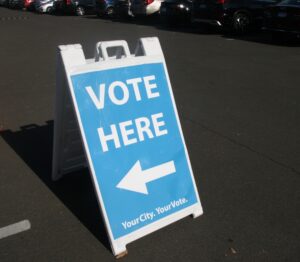 If there is no problem with the ballot, the tabulator will indicate ‘Your ballot was counted,’ and the voter is handed an ‘I voted sticker.’ Tabulators are independent machines and are never connected to the internet.
If there is no problem with the ballot, the tabulator will indicate ‘Your ballot was counted,’ and the voter is handed an ‘I voted sticker.’ Tabulators are independent machines and are never connected to the internet.
Spoiled ballots – the ones flagged by the tabulator as well as ballots voters bring back to the ballot table because they believe they have made a mistake – are put in a sealed spoiled ballot envelope, part of the total count of ballots.
Voters may notice that the ballots include a place for write-in votes, but simply writing ‘Mickey Mouse’ will not count as a real vote. Despite that, in 2022 there were 855 Minneapolis write-in votes for various offices, some but not all for the famous cartoon mouse.
More and more states have chosen to allow voters to register on election days and Minnesota is one of them. There are several ways for voters to register at the polls. If someone is not registered, they can register on the spot with an authorized picture ID. If they don’t have an ID with their current address, they can prove their residency with a utility bill, a rental agreement, a mortgage agreement or other paperwork. They can also have a voter who is registered in the same precinct vouch attesting they know the person and that person’s address.
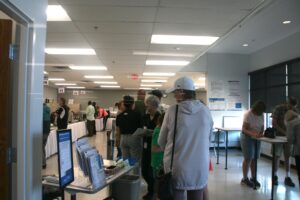
Voters line up at one of the two permanent early voting centers (Photos/Stephanie Fox)
Anyone who wished to vote by mail, a choice becoming more popular, simply had to request a mail-in ballot, fill it out and then mail it back. The city recommended that an application be requested at least a week before Election Day. Voters could then mail the ballot so it would be received by Election Day.
Maddy Diaz chose to vote using a mail-in ballot because she is a nursing student at University of Wisconsin in Menomonie and couldn’t make it back to Minneapolis for Election Day. At 19, this was her first opportunity to vote for the person who, if elected, would serve in the country’s highest office. “I really was excited about casting my first vote for President,” she said. She voted for governor during the last election, but this year, “I really wanted to give my opinion and be part of creating the future,” she said. “I got the form sent to my house, filled it out, voted and then sent it back.” She says she planned to watch the results on Election Day. “I watched both the vice presidential and presidential debates,” she said.
Some voters living at assisted care facilities get visits from a specially trained team of 22 election judges who can offer to read the ballot to a voter who may have vision problems and, if needed, to fill out the ballot as the voter indicates. The party-balanced teams work in pairs, even when transporting voting materials to and from the care facility to the voting office, so no one could be accused in trying to influence the voters on their choices.
Prior to Election Day, the City of Minneapolis tests a subset of precincts to make sure that the tabulating machines are reading ballots accurately. These tests are open to members of the public. Staff members are also on hand to answer questions about the voting process and what the city does to make sure the voting is completely honest and accurate.
Martin says that there are very few accusations against election judges. “We have robust accuracy tests and well-trained judges,” he said. “After the polls close, we do a reconciliation to make sure the number of people who signed in to vote matches the number of voter receipts, which matches the number of ballots that went through the tabulator, which matches the number of physical ballots.” It’s why, despite misinformation about voting, he says, Minneapolis remains a trusted place to cast a ballot.
Stephanie Fox is part of the Health Care team of election judges in Minneapolis.





